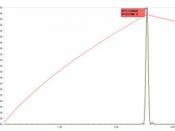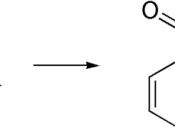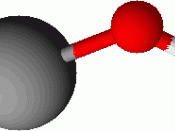Data Collection
Trial 1st attemptñ0.01 2nd attemptñ 0.1 3rd attempt ñ0.1cm
Initial 0cm 0cm 10.7cm 21.1cm
Final 10.15cm 11.7cm 21.1cm 31.35cm
Mean/Titre 10.625cm
Burette - Hydrochloric Acid (0.10 mol dm?")
Burette error - ñ 0.1ml
Pipette solution - Aspirin Solution
Pipette error - ñ 0.06ml
Indicator - Phenolphthalein (colour change in the aspirin solution from colourless to pale pink)
Data Processing and Presentation
NaOH = 1.0M before hydrolysis of aspirin
HCl = 0.1M
25cm" of aspirin solution = 1.0M of NaOH
NaOH at start = (1.0/1000) x 25 = 0.025 mol dm"
1 aspirin = 2NaOH
Aspirin tablets Molar mass = 180.17g
M = g/Mr
G = M x Mr
(0.1/1000) x 10.625 (titre) = 0.001625 x 10 = 0.01625M
moles in start (0.025) - moles NaOH (0.01625) = 0.00875 / 2 = 0.00438 mol dm" of NaOH in
Moles of NaOH 0.00438 x 180.17 = 0.789g of Aspirin
1.5g of tablets contains 0.789g of aspirin so, (0.789/1.5) x 100 = 52.6% of aspirin in 1.5g of tablets.
Conclusion and Evaluation
From the results above the experiment seem to appear as quite accurate but due to a source of error caused by pouring too much dilute water into the aspirin solution, above the original 250cm" mark, therefore having to pour some out caused a loss of NaOH as well, thereby making the results inaccurate and unreliable to an extent. The reason why the percentage of aspirin present in the 25cm" is around 50% and not around 70/80% as it should be is due to the fact that more then 250cm" of solution was formed where some of it was poured out making the a certain percentage of the aspirin slip out as well.
The procedure was quite well but due to the sources of error such as the glassware...


